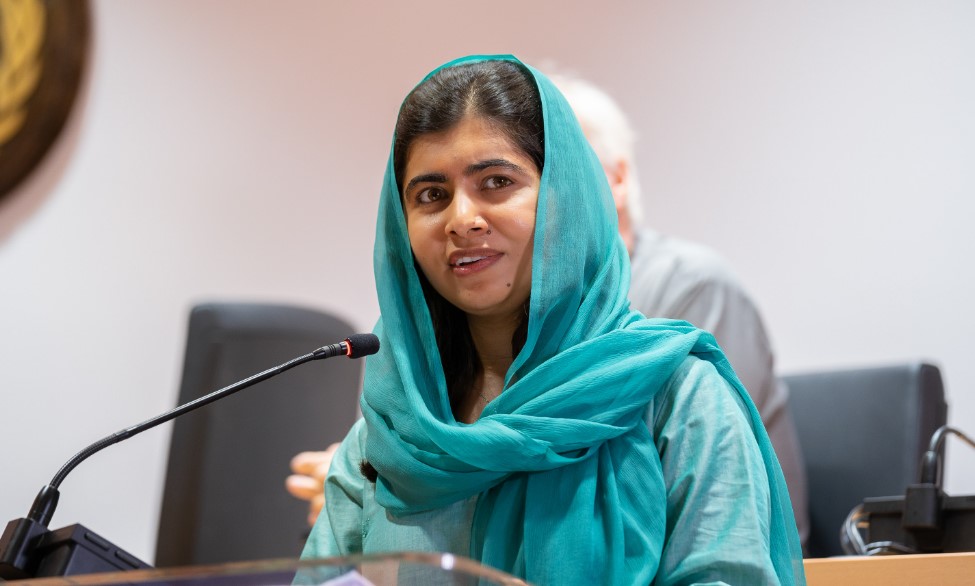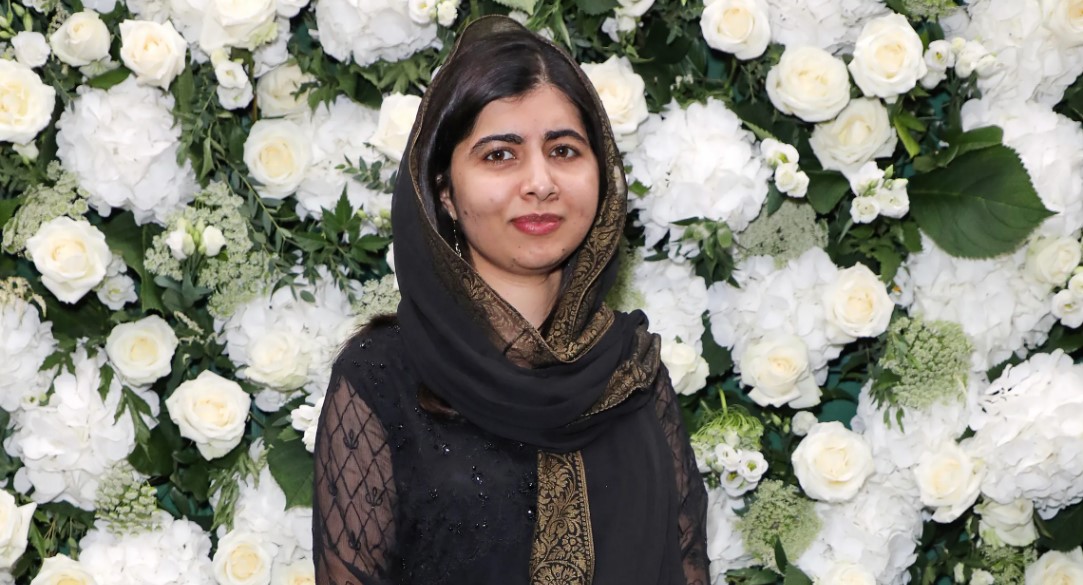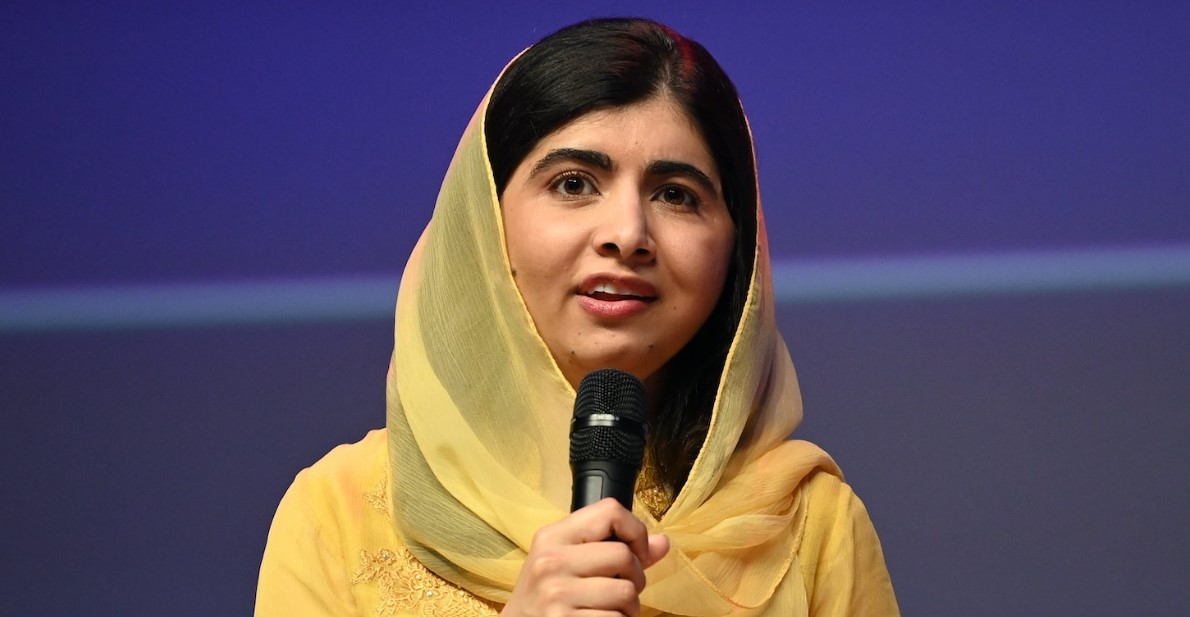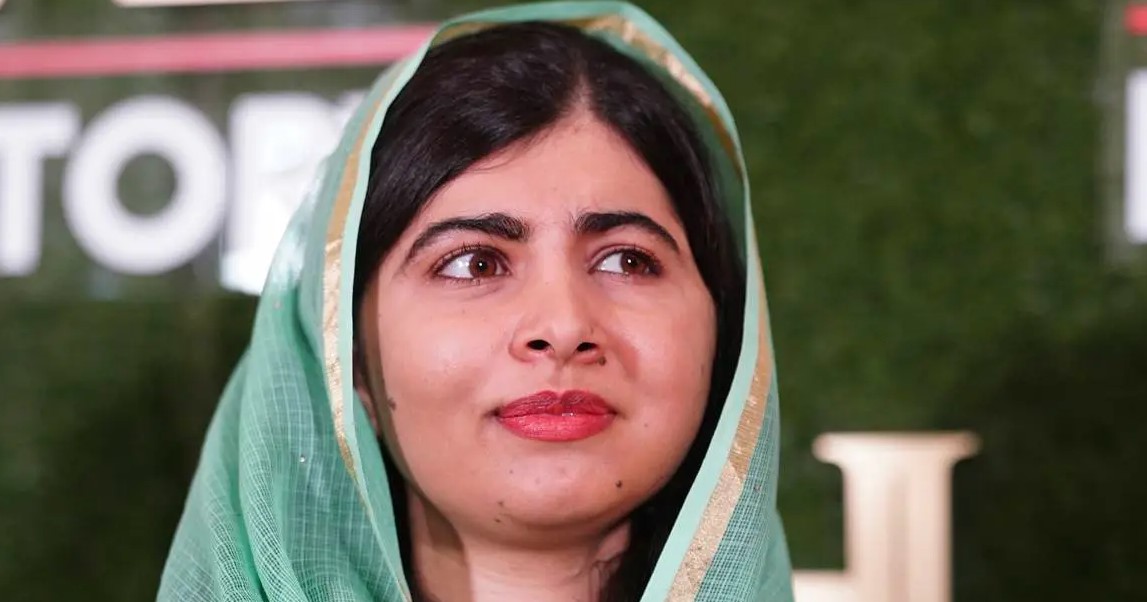Malala Yousafzai Mobile Number, Phone Number, Email ID, House Residence Address, Contact Number Information, Biography, Whatsapp, and More possible original information are provided by us here.

Malala Yousafzai is a Pakistani girl education campaigner who was declared the winner of the Nobel Peace Prize in 2014 at the age of 17. She was born on July 12, 1997. Her accomplishments include being the youngest person to ever win the Nobel Prize, being the second Pakistani to do so, and being the first Pashtun to do so. In Swat, the region of Pakistan where Yousafzai was born and raised, the Pakistani Taliban has at times prohibited females from attending school. Yousafzai is a human rights champion who works to ensure that women and children have access to education.
According to the former Prime Minister of Pakistan, Shahid Khaqan Abbasi, she has become Pakistan’s “most prominent citizen.” Her advocacy has turned into a movement that is taking place on a global scale. She was born in Swat to a Yusufzai Pashtun family and was named after the Afghan folk heroine Malalai of Maiwand. Her father, Ziauddin Yousafzai, is an education crusader. She was named after her. In addition to looking up to Abdul Ghaffar Khan, Barack Obama, and Benazir Bhutto as examples of people she admired, she was also motivated by the ideas and actions of her father, who was a humanitarian.
At the beginning of 2009, when she was just 11 years old, she published a blog for the BBC Urdu under the alias Gul Makai. In the blog, she detailed her life when the Taliban were occupying Swat. Journalist Adam B. Ellick produced a documentary for the New York Times about her life at the time when the Pakistan Armed Forces were launching Operation Rah-e-Rast against the insurgents in Swat. The documentary was about her life during that time. Her award was Pakistan’s first National Youth Peace Prize, which she earned in 2011.
Activist Desmond Tutu gave her a nomination for the International Children’s Peace Prize, which helped her rise to popularity. She also gave interviews in print and on television. Yousafzai and two other girls were shot by a Taliban gunman on October 9, 2012, when they were on a bus in Swat District after completing an exam. The murder attempt was directed at Yousafzai because of her advocacy, and the shooter left the scene. She was hit in the head by a bullet and remained unconscious and in critical condition at the Rawalpindi Institute of Cardiology. However, her health eventually improved to the point where she was transported to the Queen Elizabeth Hospital in Birmingham, which is located in the United Kingdom.
The suicide attempt on her life inspired an outpouring of solidarity from people all around the world. That she could have become “the most famous teenager in the world” was a story that Deutsche Welle published in January of 2013. After many weeks had passed since the attempted murder, a group of fifty prominent Muslim clerics in Pakistan issued a fatwā against the individuals who attempted to take her life. Following this, governments, organizations that advocate for human rights, and feminist groups all extended their condemnation to the Pakistani Taliban. In response, the Taliban issued an additional condemnation of Yousafzai, hinting that they were planning a potential second attempt at her death, which they believed to be valid since it was a religious responsibility. This resulted in yet another outrage on a global scale.
Following the completion of her recuperation, Yousafzai emerged as a more recognized advocate for the right to an education. Her home base is in Birmingham, and she and Shiza Shahid are the co-founders of the Malala Fund, which is a charitable organization. In 2013, she collaborated on the book “I Am Malala,” which became a best-seller all around the world. 2013 was the year that she was awarded the Sakharov Prize, and 2014 was the year that she was awarded the Nobel Peace Prize in conjunction with Kailash Satyarthi of India. At the time, she was the youngest person to ever win the Nobel Prize. She was just 17 years old.

In the year 2015, she was the subject of the documentary He Named Me Malala, which was nominated for an Academy Award. Throughout the years 2013, 2014, and 2015, Time magazine highlighted her as one of the most important persons in the world. In 2017, she not only became the youngest person to ever address the House of Commons of Canada, but she also received honorary citizenship in Canada. Between the years 2013 and 2017, Yousafzai attended Edgbaston High School in Birmingham, England, where she finished her secondary school education.
She went on to get a spot at Lady Margaret Hall, Oxford, where she studied for three years to earn a Bachelor of Arts degree in Philosophy, Politics, and Economics (PPE), which she will graduate in the year 2020. She went back to Linacre College, Oxford, in 2023, and became the youngest Honorary Fellow in the history of the institution. Yousafzai began advocating for education rights as early as September 2008, when her father accompanied her to Peshawar to speak at the local press club. She was motivated to do so by the assassination of slain Prime Minister Benazir Bhutto, who had been elected twice.
To chronicle the expanding presence of the Pakistani Taliban in Swat, Aamer Ahmed Khan, who works for the BBC Urdu website, and his colleagues came up with an innovative approach in late 2008. They decided to provide a teenager the opportunity to write anonymously about her experiences there. Their reporter in Peshawar, Abdul Hai Kakar, had been in contact with a local school teacher named Ziauddin Yousafzai, but they were unable to locate any pupils who were prepared to report the incident because their families deemed it to be too hazardous. Last but not least, Yousafzai proposed to his daughter, Malala, who is the age of eleven.
When this occurred, Pakistani Taliban insurgents headed by Maulana Fazlullah were in the process of gaining control of the Swat Valley. They prohibited women from going shopping, listening to music, watching television, and receiving an education. In the local squares, the bodies of police officers who had been decapitated were being exhibited. At first, a young lady by the name of Aisha who attended the same school as her father consented to keep a journal. However, her parents prevented her from doing so because they were concerned about the Taliban’s potential retaliation. Yousafzai, who was four years younger and in the seventh grade at the time, was the only other candidate that might be considered.
According to Mirza Waheed, a former editor at BBC Urdu, “We had been covering the violence and politics in Swat in detail, but we didn’t know much about how ordinary people lived under the Taliban because we had been covering them in detail.” The editors at the BBC requested that Yousafzai hide her identity by using a pseudonym because they were worried about her safety. A figure from a Pashtun folktale was the inspiration for her blog’s byline, which was “Gul Makai,” which translates to “cornflower” in Pashto. Following the 15th of January 2009, the Pakistani Taliban issued an order that did not allow any females to attend school in the region of Swat.
They had already detonated more than one hundred schools that were for females. There was a lot of artillery fire throughout the night before the ban went into force, and it was loud enough to wake Yousafzai up many times. She also read for the first time the next day extracts from her blog that had been published in a local newspaper. She did this for the first time. For February 2009, schools for females remained closed. A decision was made by private schools for boys to refrain from opening their doors until the 9th of February, and posters were posted stating this decision.

Yousafzai and her brother went back to their village of Mingora on February 7th. When they arrived, the streets were empty and there was an “eerie silence” in the air. According to what she posted on her blog, “We went to the supermarket to buy a gift for our mother, but it was closed, whereas in the past it used to remain open until late.” In addition, a great number of additional stores were shut down. The burglars had broken into their house, and they had taken their television with them.
On the 15th of February, gunfire was heard in the streets of Mingora; nevertheless, Yousafzai’s father soothed her by stating, “Don’t be scared—this is firing for peace.” The news that the government and militants were going to sign a peace pact the next day was something that her father had seen in the newspaper yesterday. In the latter hours of that day, when the Taliban announced the peace pact on their FM Radio broadcast, another wave of more intense gunfire began outside.
On the 18th of February, Yousafzai made a statement against the Pakistani Taliban while appearing on the national current affairs podcast Capital Talk. Maulana Fazlulla, the head of the Tehreek-e-Nafaz-e-Shariat-e-Mohammadi, announced on his FM radio station three days later that he was suspending the ban on women’s education. He also said that females would be permitted to attend school until the examinations were taken on March 17th, but they were required to wear burqas.
Yousafzai wrote on her blog on February 25 that she and her classmates “played a lot in class and enjoyed ourselves like we used to before.” This was a repeat of what they had done in the past. By the first of March, the number of students attending Yousafzai’s class had increased to 19 out of a total of 27, although the Pakistani Taliban were still present in the region. The shelling continued, and humanitarian supplies that were intended for individuals who had been displaced were stolen. In a letter that she sent only two days later, Yousafzai said that there was a conflict between the military and the Taliban and that the sounds of mortar bombs could be heard.
Once again, many are concerned that the calm may not be maintained for very long. Others believe that the peace accord is not a lasting solution, but rather only a temporary halt to the war. Adam B. Ellick, a writer for the New York Times, contacted Yousafzai and her father about the possibility of producing a documentary once the BBC diaries came to an end. As part of the Second Battle of Swat, sometimes referred to as Operation Rah-e-Rast, the Pakistani Army marched into the area in May to regain control of the situation.
By the beginning of July, refugee camps had reached their maximum capacity. Following a lengthy period of anticipation, the Prime Minister finally made the declaration that it was safe to return to the Swat Valley. To drive the Taliban out of the city and into the countryside, the Pakistani military had successfully forced them out. On July 24, 2009, Yousafzai’s family got back together, and they drove back to their hometown. They made one trip first, which was to meet with a group of fellow grassroots activists who had been invited to visit Richard Holbrooke, who is the special envoy of United States President Barack Obama to Afghanistan and Pakistan.

Malala Yousafzai Phone Number, Email Address, Contact No Information and More Details
Malala Yousafzai Addresses:
House Address:
Malala Yousafzai, Mingora, Pakistan
Fanmail Address / Autograph Request Address:
Malala Yousafzai
Curtis Brown Group Ltd.
Cunard House
15 Regent Street
London, SW1Y 4LR
UK
Malala Yousafzai Contact Phone Number and Contact Details info
- Malala Yousafzai Phone Number: +44(0)20-7393 4400
- Malala Yousafzai Mobile Contact Number: NA
- WhatsApp Number of Malala Yousafzai: NA
- Personal Phone Number: +44(0)20-7393 4400
- Malala Yousafzai Email ID: NA
Social Media Accounts of Content Creator ‘Malala Yousafzai ’
- TikTok Account: NA
- Facebook Account (Facebook Profile): NA
- Twitter Account: https://twitter.com/Malala
- Instagram Account: https://www.instagram.com/malala
- YouTube Channel: NA
- Tumblr Details: NA
- Official Website: NA
- Snapchat Profile: NA
Personal Facts and Figures
- Birthday/Birth Date: 12 July 1997
- Place of Birth: Mingora, Pakistan
- Husband/Boyfriend: Asser Malik
- Children: NA
- Age: 26 Years old
- Official TikTok: NA
- Occupation: Activist
- Height: 1.60 m
Business Facts
- Salary of Malala Yousafzai: $3 million
- Net worth: $3 million
- Education: Yes
- Total TikTok Fans/Followers: NA
- Facebook Fans: NA
- Twitter Followers: 1.9M Followers
- Total Instagram Followers: 2.5M followers
- Total YouTube Followers: NA

| Malala Yousafzai Address, Phone Number, Email ID, Website | |
|---|---|
| Email Address | NA |
| NA | |
| House address (residence address) | Mingora, Pakistan |
| https://www.instagram.com/malala | |
| Office Address | NA |
| Office Number | NA |
| Official Website | NA |
| Personal No. | NA |
| Phone Number | +44(0)20-7393 4400 |
| Snapchat Id | NA |
| https://twitter.com/Malala | |
| Whatsapp No. | NA |
Some Important Facts About Malala Yousafzai:-
- Malala Yousafzai was born on 12 July 1997.
- Her Age is 26 years old.
- Her birth sign is Cancer.
See also: How to Contact Jacinda Ardern: Phone number, Texting, Email Id, Fanmail Address and Contact Details


